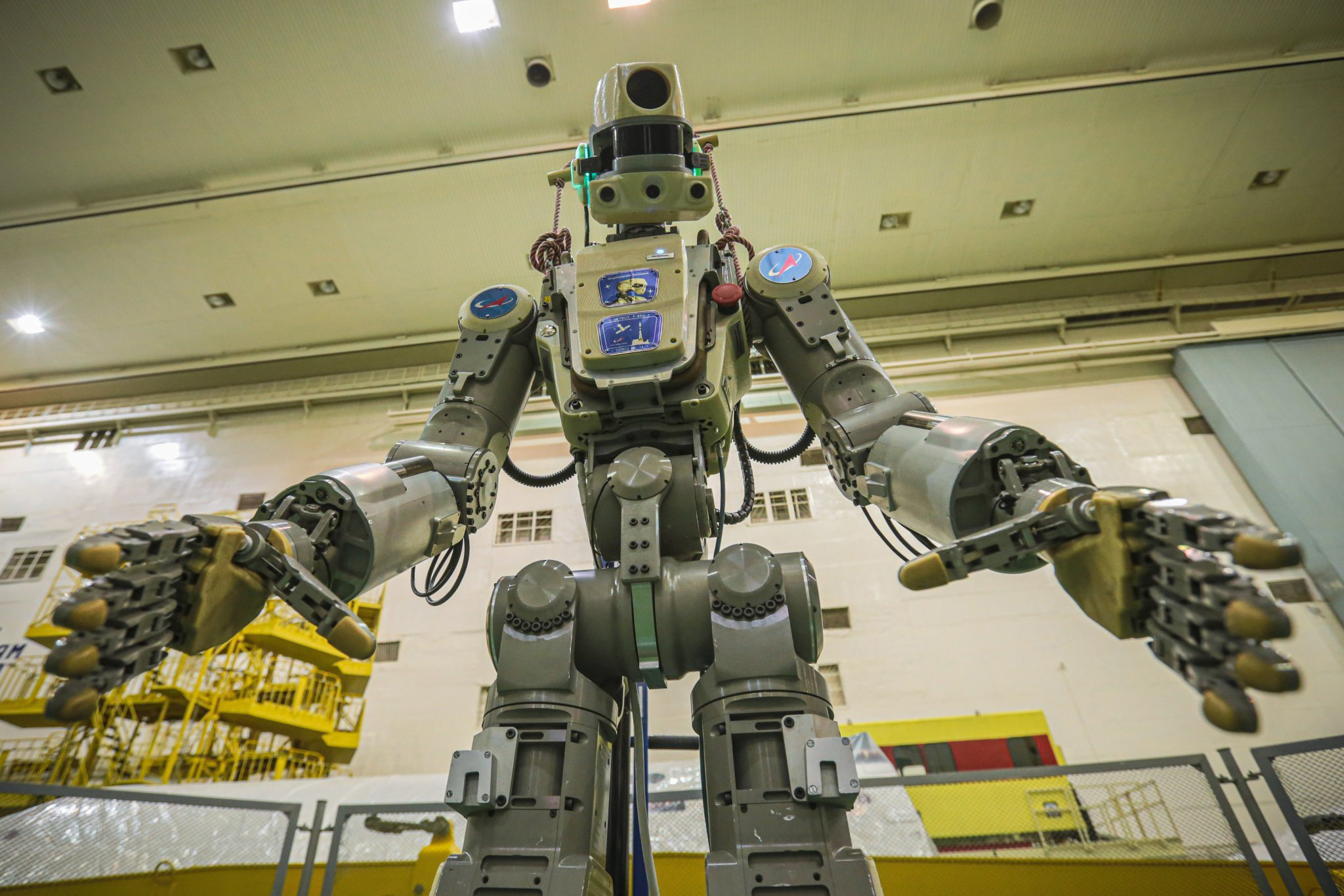
A version of this first appeared as the TIME Space newsletter sent on Aug. 24.
Newt Gingrich is going to the moon. Again. You might argue that Gingrich, the one-time Speaker of the House of Representatives, never went to the moon in the first place, that only 24 men have ever gone, all of them decades ago, that they were all test pilots and astronauts and that he’s…Newt Gingrich. And you’d be right.
But all the same, Gingrich insists that he has a plan to get Americans—if not himself—back to the moon in a hurry, and that he’s not working alone. He has the help of a crack team that includes former GOP Congressman Bob Walker, a lawmaker so disliked during his time on the Hill that The Washington Post once ran a story headlined, “Is Bob Walker The Most Obnoxious Man in Congress.” (The Post left out the question mark, which implies the answer to the question.) Also on Gingrich’s A-team is Howard Bloom, a 1960s counter-culture icon who was once the publicist for Michael Jackson and whose website describes him as the “philosopher at the end of the universe.” So: not exactly Wernher von Braun.
Nonetheless, in a plan Gingrich unspooled to Politico last week, he claimed that with the help of these partners and others, he will launch a $2 billion sweepstakes that would see industry leaders, including—but not limited to—Elon Musk and Jeff Bezos, compete in a whole new kind of space race, with $1 billion going to the first company to land a “comfortable human base” on the moon, and $1 billion to the company that can maintain it and keep it operating successfully.
“I think people would be shocked how fast they can move,” the former Speaker told Politico.
So, where to begin, apart from saying that the entire plan, from basement to penthouse, is inane? For starters, it’s not as if Musk and Bezos exactly need the cash prize Gingrich believes he could raise. Bezos especially, who is the richest person in the world and has been for a while now, has plenty of his own billions. Musk is not exactly hurting for laundry money either. What’s more, both Musk’s SpaceX and Bezos’s Blue Origin have robust lunar programs going, with Musk claiming his company will make its first circumlunar flight in 2023 and Bezos considered the leading contender to build the lunar landing vehicle NASA needs in its current push to have Americans back on the moon in 2024. Neither has any reason to disrupt their plans and throw in with Gingrich instead.
The former Speaker and his team like to cite the Google Lunar X Prize—a decade-long competition that offered $30 million to the first person or private group to land a rover on the moon—as precedent for how such an incentivized program could work. There were indeed plenty of X Prize contestants, but—not to put too fine a point on it—no one won.
The prize expired in 2018 and the jackpot went unclaimed. That’s because competitive zeal and dreams of riches are not enough to get spacecraft off the Earth and out to distant destinations. You also need know-how and machines, and a prize doesn’t do a thing to make those easier to come by.
This is not the first time Gingrich has caught the moon bug. That was in 2012, when he made an abortive run for the presidency, and during a campaign event promised that America would have a functioning lunar base by 2021, which, as he pointed out, would be the end of his second term in the White House. As I argued at the time, you can give Gingrich props for dreaming big dreams and having a vision. But dreams can be fever dreams and visions can be hallucinations and you have to know how to tell the difference.
NASA, it’s true, has bumbled away much of the last 50 years in human deep-space exploration, and the agency’s 2024 lunar target date may not be realistic. Musk and Bezos may well find that even great wealth and business acumen are no guarantee that they can overcome the punishing physics and engineering challenges of crewed lunar exploration. But they’re all pressing ahead in a steady, patient, prize-less way.
Space travel is not a sweepstakes; it’s a science. There is no room in such a life-and-death business for someone who does not understand that.
IMAGE OF THE WEEK

Last week, an unpiloted Soyuz MS-14 spacecraft lifted off from the Baikonur Cosmodrome in Kazakhstan, set on a course to dock with the ISS on Sunday. It does—sort of—have a passenger: Russia’s Skybot F-850, also known as “Fedor,” a controllable, humanoid robot, whose primary mission is to perform dangerous tasks like spacewalks, and to work as an assistant to ISS astronauts, doing repairs and maintenance on the space station.
WHAT WE’RE READING
A lunar habitat full of hot air. Literally, not figuratively. Space.com got access to a full-scale prototype of a multi-floor space habitat Sierra Nevada Corp. is designing for NASA. The space agency’s Johnson Space Center in Houston just completed a trial run, during which a crew lived inside the so-called “Large Inflatable Fabric Environment” (or “LIFE”) habitat for three days. Fully inflated, the LIFE habitat expands to 10,600 cubic ft. (300 cubic meters), and has three separate floors. It’s one of five designs NASA is currently testing for use in its Artemis lunar program.
I see a red planet and I want it painted black. Last Thursday, the venerable rock group the Rolling Stones performed a show at the Rose Bowl Stadium in Pasadena, Calif. Before the band took the stage, actor Robert Downey Jr. grabbed the mic and made an announcement: NASA’s InSight lander team had named a golf-ball-sized Martian rock “Rolling Stones Rock.” Beyond the Hollyweirdness of it all, why bother naming a pretty small space rock at all? Well, when InSight touched down on Mars on Nov. 26, 2018, apparently its thrusters caused the rock to roll about 3 ft. (1 meter)—the farthest NASA has seen any rock roll due to a spacecraft landing on another planet.
NASA’s Mars 2020 rover won’t be the only Mars car launching next year. The European Space Agency and Roscosmos (Russia’s space agency) are working on a Red Planet rove, which they’ve named after Rosalind Franklin—the largely uncredited co-discoverer of DNA, who is overdue for some recognition. The name is cool and so is the spacecraft.
Meanwhile, on Jupiter… We tend to focus our attention on the moon and Mars, but perhaps the most promising place in the solar system for sustaining life is Europa, one of Jupiter’s 79 moons. Last— week, NASA announced that it was approving the Europa Clipper mission to move to its next phase, in which it will construct and test a design of the spacecraft and science payload meant to explore the icy moon for evidence of conditions suitable for life as we know it.
QUESTION OF THE WEEK
Jupiter’s Europa has a salty liquid ocean; so does Saturn’s Enceladus. Mars has underground reservoirs of water, and had rivers and oceans in the distant past. We still don’t know for sure if Earth is really the only place in the solar system that churns with life. Where in our star system do you think humans will first encounter extraterrestrial life?
A) Mars
B) The moon
C) Europa
D) Enceladus
E) Pluto
Email us at space@time.com and tell us what you think.
THANKS FOR READING
TIME Space is written by Jeffrey Kluger, Editor at Large at TIME magazine, and the author of 10 books, including Apollo 13, Apollo 8 and two novels for young adults. Follow him at @jeffreykluger.
We welcome any feedback at space@time.com.
More Must-Reads from TIME
- Inside Elon Musk’s War on Washington
- Meet the 2025 Women of the Year
- Why Do More Young Adults Have Cancer?
- Colman Domingo Leads With Radical Love
- 11 New Books to Read in Februar
- How to Get Better at Doing Things Alone
- Cecily Strong on Goober the Clown
- Column: The Rise of America’s Broligarchy
Write to Jeffrey Kluger at jeffrey.kluger@time.com



